- Home
- Martin Amis
The Moronic Inferno and Other Visits to America Page 3
The Moronic Inferno and Other Visits to America Read online
Page 3
3. The Time Bomb in the Nursery
Atlanta, Georgia, is one of the model cities of the New South. The scene of many a crucial battle in the desegregation war, Atlanta has since dubbed itself 'the city too busy to hate*. The 6oo,ooo population is predominantly black, as is the city administration. The airport, the world's largest, is designed by black architects, its concourses adorned with the work of black artists. Downtown, among the civic mansions and futuristic hotels, the streets are so clean that you expect to see ashtrays, standard lamps, Hoovers, on every corner.
It was the random nature of the killings which first persuaded Atlanta that the city's crisis was a racial one. Where else do you find any link or motive? This kid was shot, that one bludgeoned, that one stabbed. None of them had any money. There was no obvious sexual factor in the killings, except perhaps in the case of the two girls (Latonya Wilson was found four months after her death, her body partly eaten by dogs; Angel Lanier was found a week after her disappearance, sexually molested, tied to a tree). All the children were dumped, having been killed elsewhere. Some had been hidden, some had been laid out openly, in natural, relaxed postures. The victims have only three things in common: they were black, they were poor, and they were children.
'Sure we thought it was racial,' I was told. 'Or political anyway. Some movement might be doing this to force a situation. Might be extreme right or extreme left. And with us black folks squeezed in the middle.’
Racial disquiet climbed in the city all last year, until October. Then came the bomb in the nursery. An explosion in a day nursery killed three children and a teacher, all of them black. 'Now I am a mild man,' said an elderly negro. 'I don't hold with this vigilante stuff. But after that explosion, I was ready to go. I didn't think it was a bomb. I knew it was a bomb. And it was the Klan put it there.’
The day nursery is on a broad street, one marked by an air of colourful poverty, opposite a run-down school. It is not difficult to imagine the scene on that hot autumn day. Hoax calls forced five nearby schools to evacuate. There must have been a lot of fear and anger milling around on the street.
Mayor Maynard Jackson and Commissioner Lee Brown, the two prongs of the black administration, did what they had to do: they acted fast. Within hours black experts were on the scene, pronouncing the cause of the explosion: old boiler, faulty wiring. 'If that thing hadn't been open and shut the same day,' I was told, 'well, it could have been a bloody night in Atlanta.’
No one thinks the killings are primarily racial any more. No one thinks the killings are primarily anything any more. Fear and bafflement are very tiring, and Atlanta is a weary city by now. Twenty have died, but the effects of the trauma are incalculable.
In a sense, the bomb in the nursery is heard and felt every day. Children no longer play in the parks and streets. In the housing projects, council estates which combine urban decay with a tang of authentic suburban dread, children stand and talk in groups, and stare at the cars. There have been alarming increases in all symptoms of juvenile anxiety: bedwetting, refusal to sleep alone, fear of doors and windows. Reports go on about children having 'lost the capacity to trust people'. If the murderer or murderers, the leftist or rightist, the madman or madmen unknown are caught and convicted tomorrow, there won't be a black child in Atlanta whose life has not already been deformed by these killings.
4. Circus of the Supercops
Last November, Dorothy Allison, known as 'the vendetta psychic', came to town at the invitation of the Atlanta police. Dorothy had been fighting crime with her paranormal powers since 1967, when a dream led her to discover the body of a five-year-old boy, stuffed into a drainpipe. She worked on 100 cases, finding 38 bodies and solving 14 murders. But Dorothy drew a blank in Atlanta. Townspeople complain that she spent most of her time here promoting her autobiography on local radio shows. One mother said that the psychic never returned her only photograph of her murdered son.
The FBI were in Atlanta by this stage, and the Missing Persons Bureau (originally with a staff of four) had been belatedly expanded into a thirty-seven-member Task Force, working in the showrooms of the old Leader Lincoln-Mercury dealership in the centre of town. A reward of $ioo,ooo was established. 'That ought to smoke them out' was the general view. 'That'll shake the trees.’
But it didn't. And then the supercops hit town: from Manhattan, Detective Charles Nanton, who worked on 'Son of Sam'; from Los Angeles, Captain Pierce Brooks, the man who caught the cop-killers in the 'Onion Field' case; and several other crack enforcers from all over the States. The supercops left Atlanta a fortnight later, quietly.
Epidemiologists from the Centre for Disease Control set up their computers. Advice was sought from the anti-terrorist training school in Powder Springs. The Guardian Angels from New York are the latest in a long line of feted hopefuls. Two $io,ooo-apiece German Shepherd dogs, so high-powered that they respond only to German commands, contributed their hunting skills. Someone with tracking experience in Africa offered to ...
'It made a lot of people mad,' said one old Atlantan. 'Hell, it was all PR. They all just wanted to look good.' Since the Killings in Atlanta are now world news, everyone wants to look good in the glow: George Bush, Burt Reynolds, Frank Sinatra, Ronald Reagan.
The supercop circus didn't find what it was looking for. But it found something else: more crime. Quotidian lawbreaking doesn't stop while massacres take the headlines; and the intense investigations in Atlanta were uncovering whole new layers of transgression and turpitude.
An officer searches an abandoned building for clues: in a stairwell he finds the skeleton of a forty-year-old man. A tracking dog returns to its master — with the skull of an adult female in its jaws. The weekly citizen area-sweeps routinely turn up caches of guns and stolen goods. Peaceable burglars panic at road-blocks.
Late last year three kids in their mid-teens were arrested for robbery. A health-check revealed that they had all contracted syphilis. Soon afterwards a forty-one-year-old man was arrested for sodomy; several other under-age boys were involved. A nine-year-old girl was picked up off the street by the police, for her own protection. She turned out to be an experienced prostitute. She had been giving 'head and hand' since she was five.
There is certainly a childish underworld lying beneath the surface of Atlanta life. But the murder victims did not belong to it. Several of . the boys were street-wise; they hustled for work, for tips, for errands, but they were not delinquent. One boy, Aaron Jackson Jnr, aged nine, used to break into houses, but only for food and warmth. A woman woke up to find Aaron asleep on her sofa. The refrigerator had been raided. Little Aaron was last seen on November 1,1980, at the Moreland Avenue Shopping Center. His body was found the next day, under a bridge. The cause of death was asphyxiation.
5. The 'Invisible Man' Theory
'Theories — that's one thing we've got plenty of,' said the DA. 'Me, I still think it's sex'n'drugs.’
I mentioned that the bodies of the boys showed no sign of sexual interference.
'Don't have to be no sign of it. They get the kids, smoke a little marijuana, try some sex stuff. The kid might just be an onlooker... Or maybe some of the kids are pushing a little dope, and need teaching a lesson by the Man. Or maybe it's their parents who're being warned. Has to be money involved. Bottom line for a whole lotta stuff is money.’
On one of the early clue-sweeps,, police entered a recently abandoned house. They found an axe, a hatchet, a shovel, and some children's clothing. They also found two Bibles — nailed to the wall. The Bibles were open, one on Isaiah 1:14 to 3:15, the other on Jeremiah 15:4 to 18:4. Back at the Atlanta America Hotel, I picked up the complimentary Gideon and read through the passages: 'Bring 'no more vain offerings — your hands are full of blood. Wash yourselves — /I have brought against the mothers of young men/a destroyer at noonday;/I have made anguish and terror/fall upon them suddenly.’
After the discovery of the nailed Bibles the 'Cult' Theory gained currency for a while. The kids were
being killed to satisfy the rituals of some voodoo brotherhood; several of the children had been carefully washed, after all, and laid out in stylised postures. For a short time in 1980, and again in the last three months, the monthly cycle of the killings encouraged the 'Disturbed Female' Theory. Perhaps a failed mother or a childless woman was acting out a complicated revenge on the living world.
Are the killers white or black? To begin with, of course, this was the crucial question. Several of the kids were picked up in areas where a white man would stick out like a pink elephant. The city population splits 60-40, but the street presence is much more one-sided than that, if the murderers and the victims turned out to be the same colour, the Killings in Atlanta would accord with the mainstream of American crime. Blacks make up an eighth of the US citizenry, and a half of its prison population. Most crime is still segregated. To a wildly disproportionate extent, violence in America is black on black.
Atlanta is a scattered city, surrounded by a lot of open and unfrequented country — lakes, wide plains, woodlands. The killers use all this space and are heavily reliant on their mobility. It sometimes seems that only a black could go to work with the unobtrusive speed and freedom that he needs.
In Chesterton's story, 'The Invisible Man', the detective Father Brown orders four people, two of them policemen, to keep watch on the only entrance to the flat of a potential murder victim. The murder takes place, the four men claim that 'no one' went through the door. Oh yes he did, says Father Brown — and he walked past you all with the body in his arms. 'The Invisible Man?' someone asks. Correct, in a sense. The murderer was the postman, and he carried the victim in his sack.
A uniform confers facelessness, jurisdiction, and a degree of invisibility. 'Now that could be anyone,' said a local crime reporter, 'delivery man, bus driver, utility worker... or a cop.’
The switch from a white to a black administration has happened only over the last few years. A lot of people were edged out in that shift. Many white cops, in particular, got sacked or passed over for promotion (with accompanying scandals: exams were rigged to favour black candidates, and so on). Now, if the motive was to discredit and humiliate the black-run police force, then the 'Rogue Cop* Theory has life in it.
Perhaps, though, motive is the wrong thing, the irrelevant thing, to look for. It is possible that the twenty murders will break down into four or five weird clusters. What strikes you again and again is that the Killings in Atlanta have been so easy to do. Despite the propaganda, the campaigns, the fear, kids still go with strangers. Last month black and white plainclothes-policemen drove in unmarked cars round the housing projects, the vacant lots, the shanty houses with ripped car seats on their patios. There are no adults about, there is no authority, there is not even a memory of the survival instincts of the old ghetto. 'Hey, kid,' the decoys would call to the children they found, 'you want to earn ten bucks? Hop in.' They got a rider every time.
6. The View from Peachtree Plaza
The Peachtree Plaza Hotel is the centrepiece of downtown Atlanta. It is a billion-dollar masterpiece of American efficiency, luxury and robotic good manners. 'Mm-hm. Mm-hm,' everyone says five times a minute as they glide across its fountained halls.
Among its other accomplishments, the Peachtree is the tallest hotel in the world. If it's essence of vertigo you want, take the scenic elevator to the seventy-second floor and enjoy a Cloud Buster ('a refreshing blend of coconut milk, pineapple juice and vodka served in a souvenir replica of the Hotel' - $7.95. 'Thank you.' 'Mm-hm') in the revolving Sundial Lounge.
There you will see the scalextric of the city, with its flyovers and chicanes, the dwarfed high-rise car-parks, the windshields blazing in the malls, the elevated trains, equitable, omni, life of georgia, thruways glistening like canals... and the acres of toytown prefabs on the criss-crossed suburban streets, where a person or persons unknown is still stealing the kids off the streets.
To the south-east lies Miami. Last May, four white policemen were acquitted there after the fatal beating of a black suspect, Arthur McDuffie. It happened on the street, after a chase. The medical examiner said that McDuffie's injuries were consistent with 'falling four storeys and landing between your eyes'. When the acquittal was announced there were three days of rioting: 16 dead, 400 injured, $ioo million worth of damage.
In Buffalo, New York, last September, four random blacks were shot in the head by the same white man. A fortnight later, two black cabbies were found with their hearts ripped out. In Oklahoma City, a black man and a white woman were shot to death in a parking lot. In Fort Wayne, Indiana, black leader Vernon Jordan was shot in the back while climbing out of a white woman's car. In Johnstown, Philadelphia, a mixed couple were murdered as they walked across the street. In Salt Lake City, Utah, two black men were shot while out jogging with white wortien.
In Birmingham, Alabama, there is a Ku Klux Klan military training camp, called My Lai in honour of the war criminal William Galley. In Greensboro, North Carolina, last November, an all-white jury acquitted six Klansmen and Nazis of the murder of five black and white Communists. In Chattanooga, Tennessee, acquittals and dropped charges have released five Klansmen accused of killing five black women on the streets.
Are these things connected? Are the Killings in Atlanta connected, to these killings or to each other? It is very tempting to see patterns here, or simply a change in the emphasis of murder in America.
Atlanta looks peaceful enough in the mild winter light. Atlanta in August will be a different proposition from Atlanta in January. The killings will not have been solved; and by then, too, President Reagan's passive attitude to pro-black legislation will have begun to hurt. Anyway, the summer is the time for racial anger and despair. In summer, the ghettos always heat up. They will expand and swell in the sun. Some will burst.
Observer 1981
* * *
Postscript Early in 1982, an irregularly employed black disc-jockey called Wayne Williams was convicted of two of the Atlanta child murders and, by implication, some or all of the remaining twenty-seven. There was much that was unsatisfactory about the trial. The evidence for the prosecution centred on the (circumstantial but compelling) fact that 'fibres' found on the victims matched the Williams family carpet. Williams's defence was agreed to be feeble verging on incompetent. The trial raised all sorts of questions about the exertion of public — and media — pressure to effect a palliative outcome. It seemed to me weirdly characteristic that the first thing Williams did, on his arrest, was call a press conference. Meanwhile, serving his life sentence, Williams ponders the legal options, his hand occasionally strengthened by such things as Abby Mann's five-hour drama-documentary for CBS, The Atlanta Child Murders, which was very partial, very anti-establishment and very pro-Williams (the killer, Mann implies, was probably white). Have the murders come to an end? The violent death of poor American blacks, unless given urgency by politics, has never much exercised the American judiciary; and some observers suggest, most depress-ingly, that the Atlanta murders continue, as they always have and always will. Perhaps, then, the Killings in Atlanta are over, while the killings in Atlanta go on.
Truman Capote: Knowing Everybody
It was, I hope and trust, a radically below-par Truman Capote who received me at his UN Plaza apartment on an equatorial New York afternoon.
'Truman's sort of sick,' said the lady from Random House who answered the door.
'Oh dear. Would you rather I... ?’
'No, he can talk. So long as he can rest at the same time.’
I was led past a couple of reception rooms, beyond whose jungly curios and foliage you could glimpse the burnished leagues of the East River. Then, from the gloom at the end of the passage, emerged the helpless, tottering figure of Mr Capote, who let out a soft wail of greeting and extended a tiny hand.
For pity's sake, I wanted to say — never mind the interview. Let's call an ambulance. Or I can take him there in my briefcase, I thought, as I contemplated the childish, bar
efoot, night-shirted figure, sixty-three inches tall and barely a hundred pounds. But Truman clutched me dramatically by the hand and urged me towards the bedside chair. The lady from Random House then took her leave with a calming smile.
At once Truman disappeared for a long and complicated session in one of the nearby bathrooms (the first of several noisy visits during my two-hour stay). Shrugging, I looked round the room. Saul Bellow has a thousand ways of describing the human face; Truman Capote, in his fiction and journalism, is the litanist of habitats, furniture, surfaces, clothes, scents.
The room was plain, almost functional. The curtains were three-quarters drawn behind the wickerwork headboard of the bed. The white bedside tables were stacked with medicines, magazines and books — Di-Gel, Vogue, Interview, Kenneth Tynan's Show People, The Great Houses of Paris. Next to the glass-fronted bookcase lay three pairs of sorrily crumpled shoes. The half-darkness held the authentic, sleepy tang of the convalescent room.
Following a final, convulsive series of nose-blowings and bark-like sneezes, Truman tiptoed back into the room and lowered himself gingerly on to his cot. Poor Truman. In his long-nailed fingers he furled a pink silk handkerchief.
With the great man at such an obvious disadvantage, I naturally felt that I needn't mind much what I said to him. Although Capote is doubtless as touchy as the next Great American Novelist, he gives off very little amour propre. He generates vulnerability and candour, and has none of the regality of, say, his old friend Tennessee Williams or his old enemy Gore Vidal. As Capote points out in his new book, Music for Chameleons: 'I'm an alcoholic. I'm a drug addict. I'm homosexual. I'm a genius.' As casually as I could, I asked the recumbent Truman about his current relationship with pills and drink.

 Other People
Other People The Zone of Interest
The Zone of Interest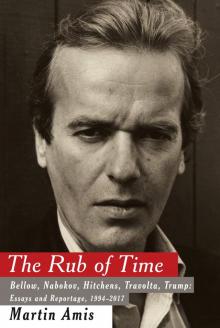 The Rub of Time: Bellow, Nabokov, Hitchens, Travolta, Trump
The Rub of Time: Bellow, Nabokov, Hitchens, Travolta, Trump Koba the Dread
Koba the Dread Success
Success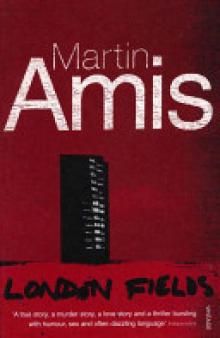 London Fields
London Fields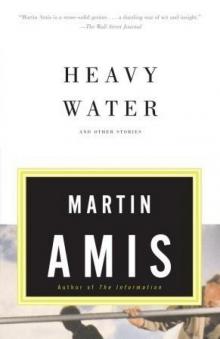 Heavy Water: And Other Stories
Heavy Water: And Other Stories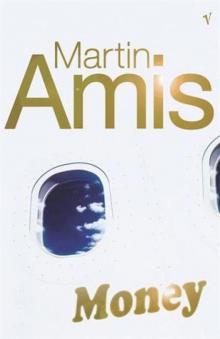 Money
Money The Moronic Inferno and Other Visits to America
The Moronic Inferno and Other Visits to America Yellow Dog
Yellow Dog Time's Arrow
Time's Arrow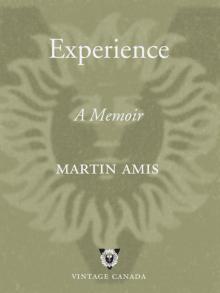 Experience: A Memoir
Experience: A Memoir Einstein's Monsters
Einstein's Monsters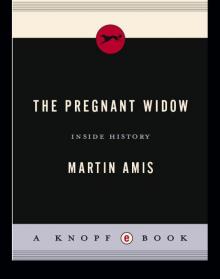 The Pregnant Widow
The Pregnant Widow House of Meetings
House of Meetings The Information
The Information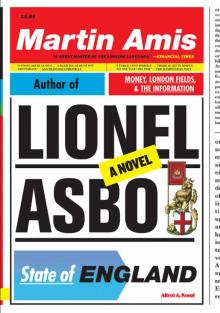 Lionel Asbo: State of England
Lionel Asbo: State of England Lionel Asbo
Lionel Asbo Heavy Water and Other Stories
Heavy Water and Other Stories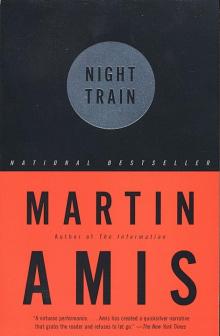 Night Train
Night Train Heavy Water
Heavy Water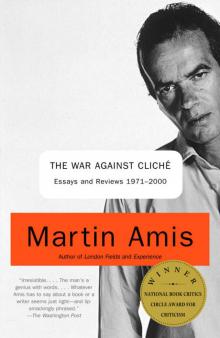 The War Against Cliche: Essays and Reviews 1971-2000 (Vintage International)
The War Against Cliche: Essays and Reviews 1971-2000 (Vintage International)